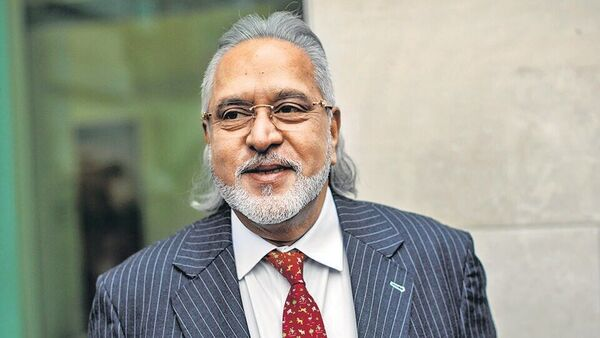



India’s reliance on imported urea, DAP, and MOP creates strategic vulnerabilities and soil health issues. Transitioning to balanced fertilization using alternatives—APS, SSP, NPK complexes, bio- and organic fertilizers—and boosting nutrient use efficiency via subsidies, farmer education, domestic production, and soil testing is crucial for sustainable agriculture, ensuring long-term productivity.

Copyright infringement not intended
Picture Courtesy: indianexpress
India’s dependence on imported fertilizers—urea, di-ammonium phosphate (DAP), and muriate of potash (MOP)—poses strategic and economic risks, exacerbated by global supply chain disruptions, currency depreciation, and subsidy constraints.
|
MOP is fully imported from countries such as Canada, Russia, Jordan, Israel, Turkmenistan and Belarus, as India has no mineable potash reserves. In urea, India’s production meets over 85% of its consumption demand, but the plants mostly run on liquefied natural gas imported from Qatar, US, UAE or Angola. DAP is imported in the form of finished fertiliser (largely from Saudi Arabia, China, Morocco, Russia and Jordan) as well as raw material (rock phosphate from Jordan, Morocco, Togo, Egypt and Algeria; sulphur from UAE, Qatar and Oman). |
|
Urea and MOP contain 46% nitrogen (N) and 60% potash (P) respectively. DAP has 46% phosphorus (P) plus 18% N. |
Nutrient Based Subsidy (NBS) Scheme: Provides subsidies for non-urea fertilizers based on their nutrient content (N, P, K, and S), encouraging a shift away from urea. While initially intended to promote balance, price controls have sometimes inadvertently made DAP cheaper, creating a new imbalance.
PM Programme for Restoration, Awareness, Nourishment and Amelioration of Mother Earth (PRANAM): Aims to promote sustainable agriculture and reduce chemical fertilizer use.
Soil Health Card (SHC) Scheme: Provides farmers with soil analysis reports and fertilizer recommendations, promoting balanced nutrient application based on soil needs.
Paramparagat Krishi Vikas Yojana (PKVY): Encourages organic farming and reduces reliance on chemical fertilizers.
Promotion of Complex Fertilizers: Encouraging the use of complex fertilizers that contain a mix of nutrients in balanced proportions, tailored for different crops and soil types.
Enhance Nutrient Use Efficiency (NUE)
NUE refers to maximizing crop output per unit of nutrient input. Improving NUE means getting more crop yield from the same amount of fertilizer, or the same yield from less fertilizer.
Strategies to Improve NUE
Integrated Nutrient Management (INM): Combining chemical fertilizers with organic sources like manure, compost, crop residues, and bio-fertilizers (e.g., rhizobium, azotobacter, phosphate-solubilizing bacteria).
Precision Farming: Using technologies like soil testing, leaf color charts, and sensor-based application to apply fertilizers at the right rate, time, and place, based on actual crop needs.
Modified Urea Products: Utilizing neem-coated urea, sulfur-coated urea, and nano urea. Neem coating slows down nitrogen release, improving efficiency and reducing losses. Nano urea is a highly efficient liquid fertilizer that is absorbed directly by leaves, requiring smaller quantities.
Improved Application Methods: Techniques like deep placement of urea and fertigation (applying fertilizers through irrigation) can enhance nutrient uptake and reduce losses.
Crop Rotation and Green Manuring: Including legumes in crop rotations and using green manures (like Dhaincha and Sunhemp) can naturally fix nitrogen in the soil, reducing the need for urea.
Developing Improved Crop Varieties: Breeding crops that are more efficient at nutrient uptake and utilization.
Promote Alternatives to Urea, DAP, and Potash
Ammonium Phosphate Sulphate (APS) 20:20:0:13: Emerges as an effective alternative to DAP, especially for sulfur-hungry crops like oilseeds, pulses, maize, cotton, onion, and chili. APS contains 20% Nitrogen, 20% Phosphorus, and 13% Sulfur. Its sales are increasing as farmers recognize its benefits and cost-effectiveness compared to DAP.
Single Super Phosphate (SSP): A cheaper alternative to DAP, containing 16% Phosphorus and 11% Sulfur.
NPK Complexes (10:26:26:0, 12:32:16:0, 15:15:15:0, 14:35:14:0): These complex fertilizers provide a more balanced nutrient profile and can reduce the need for direct MOP application.
Bio-fertilizers: Encourage the use of bio-fertilizers like rhizobium, azotobacter, and phosphate-solubilizing bacteria to enhance nutrient availability naturally and reduce chemical fertilizer dependence.
Organic Fertilizers: Promote organic manures, vermicompost, and other organic fertilizers to improve soil health and reduce reliance on chemical fertilizers.
Nano Urea and Nano DAP: These innovative fertilizers are more efficient and can reduce the overall quantity of conventional fertilizers needed.
Government Policy and Support:
Subsidy Rationalization: Reforming fertilizer subsidies to favor balanced fertilizers and reduce the price advantage of urea and DAP. Explore increasing DAP prices and decreasing MOP prices to create a more balanced pricing structure.
Direct Benefit Transfer (DBT) of Fertilizer Subsidies: Implementing DBT to ensure subsidies reach farmers directly and prevent leakages and black marketing.
Promote Domestic Production of Alternatives: Encourage domestic production of APS, complex fertilizers, SSP, bio-fertilizers, and organic fertilizers through supportive policies and investments.
Invest in Soil Testing Infrastructure: Expand and strengthen soil testing facilities across the country to enable farmers to make informed decisions about fertilizer application.
Farmer Education and Training: Conduct extensive farmer education programs to promote balanced fertilization, NUE practices, and the benefits of alternative fertilizers. Training should focus on soil health management and scientific fertilizer use.
Mandatory Neem Coating of Urea: Continue and strengthen policies like mandatory neem coating of urea to improve its efficiency and reduce misuse.
Promote Potash Derived from Molasses (PDM) and SSP: Government should continue to promote and subsidize indigenously manufactured fertilizers like PDM and SSP.
Way Forward
To effectively wean Indian farmers from urea, DAP, and potash, a sustained and coordinated effort is needed. This involves:
Must Read Articles:
CHALLENGES IN INDIA'S FERTILISER IMPORTS
TRANSFORMING INDIA'S FERTILIZER INDUSTRY FOR SUSTAINABLE SOIL
Source:
|
PRACTICE QUESTION Q.Examine whether India’s subsidy policies incentivize overuse of chemical fertilizers at the expense of sustainable agriculture. 250 words |







© 2025 iasgyan. All right reserved